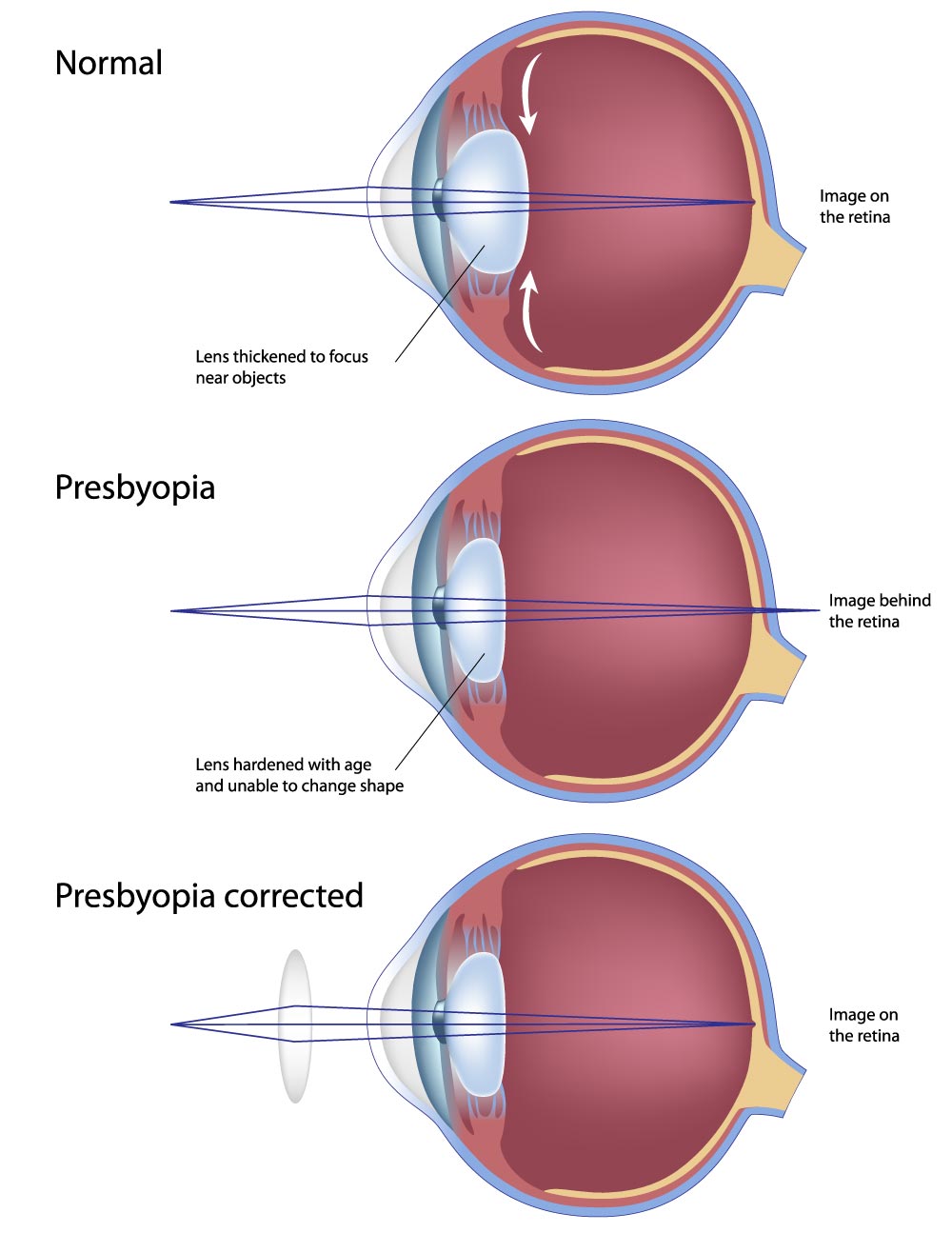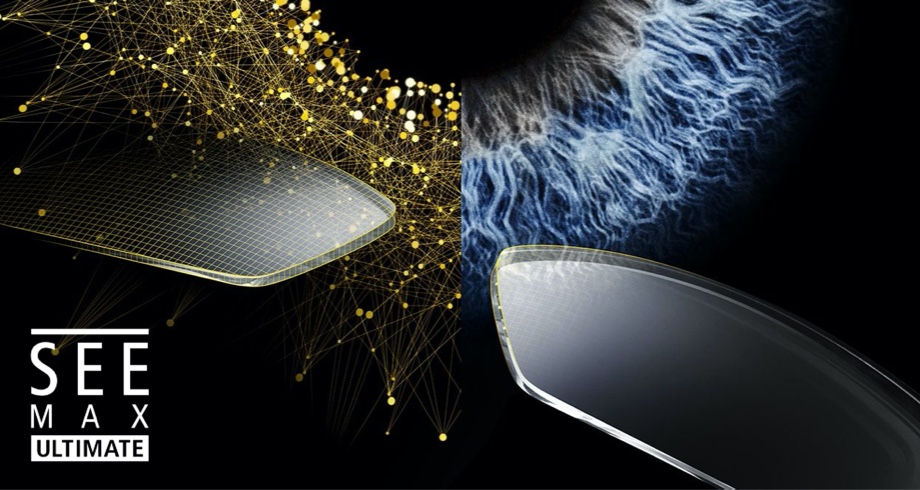Understanding Presbyopia and Progressive Lenses

You are over 40 years old and you are experiencing headaches at the end of the day?
Finding it increasingly harder to see things clearly?
Is your vision getting blurry?
As we grow older, the crystalline lens in our eyes gradually loses its flexibility, making it harder to focus clearly on near objects. This is called presbyopia.
What is Presbyopia?
Presbyopia spares no one: yes, you too will experience it at a certain age, usually around the age of 40, even if you have never had any vision problems before.
Let us explain why presbyopia occurs around the age of 40. The crystalline lens, a transparent lens located inside the eye, loses its elasticity from the age of 40 onwards and the vision loses its clarity as a consequence. In order to see correctly at close distances and to obtain a clear image, the lens bulges and increases in size to change its refractive power. It is this phenomenon that makes it possible for the eye to focus, the very same principle used by the autofocus of your camera or smartphone.
The scientific term “presbyopia” thus refers to the loss of flexibility of the lens that makes “focusing” increasingly difficult.

Presbyopia symptoms
When you become presbyopic, you may also notice that stretching your arm to read a label or the latest news headline on your tablet has become worryingly mundane. Focusing between changing distances can also become gradually difficult.
Unfortunately, when you move things further from your eyes they get smaller in size, so this is only a temporary and partially successful solution to presbyopia.
You may still see close objects pretty well, however, unfortunately presbyopia can cause headaches, eye strain and visual fatigue that makes reading and other near vision tasks less comfortable and more tiring.

Now you may be wondering if there are any eye exercises for presbyopia that you can do to prevent this from happening.
Frankly? No.
On a more serious note, seeing clearly and comfortably is far from being vain – it’s an essential part of the quality of your day-to-day life and health. So here are the steps you can take when presbyopia comes knocking.
Diagnosing presbyopia
If you or your family members are experiencing symptoms of presbyopia — blurry vision, or difficulty in focusing on objects up close — the first thing to do is to schedule an appointment with your optometrist.
Do note that unless you have already blown out your forty candles, these symptoms might not mean you are presbyopic. It could be hyperopia (farsightedness) or astigmatism. The symptoms can seem similar, but the condition is different.
Of course, once you are certain that you have presbyopia, it’s time to explore your options to correct it.
Contact lenses for presbyopia
Multifocal contacts can help you see objects that are both near and far, while keeping your glasses in your pocket if needed. Contact lenses are comfortable and can be worn longer these days however, they do cost a little more than normal types of contact lenses and are not suitable for people with chronic dry eyes.
Presbyopia surgery
There are also surgical options you can consider to correct presbyopia. LASIK or CK (Conductive Keratoplasty).
Of course, surgery always has risks, however small they might be. After some time, presbyopia might come back again even after surgery. The cost of corrective eye surgery is quite high as well.
Eyeglasses for presbyopia
Progressive lenses are the best option to address presbyopia in a single pair of lenses. They give you clear and comfortable vision at near, mid and far distances.
Nikon Lenswear offers a wide range of choices that will deliver superior optical performance, better aesthetics and optimal comfort. We even have solutions that offer a wider field of vision if you work for long periods of time with near and intermediate vision (e.g., deskwork, screens, skilled trades). Needless to say, one pair of eyeglasses may not be enough as your vision may require a wider field of vision in near and mid distances depending on your needs and lifestyle.
Nikon’s SeeMax Ultimate, a technological breakthrough where every lens is co-designed based on your needs, preferences and viewing habits for the ultimate, tailor-made, viewing experience

Nikon’s latest series of near and intermediate lenses E-Life Pro offers lenses that are made for your lifestyle to tackle the needs for focused tasks and an enhanced near and intermediate vision making focusing easier.
Have a look at our range of progressive lenses and our range of near and intermediate lenses to find the one that will best suit your eyes and your lifestyle. The world is a better place when seen clearly. Trust us on this one.
Presbyopia and you
There’s no need to let presbyopia get you down! We are all in the same boat and, as we’ve explored together, a myriad of effective options are available to correct this lovely sign of aging. If you are lucky enough to have reached the big 4-0 and are wondering if you do have presbyopia, simply schedule an appointment with one of our Nikon Lenswear partners.
Wait no more.
Take the step towards clear and comfortable vision today.
